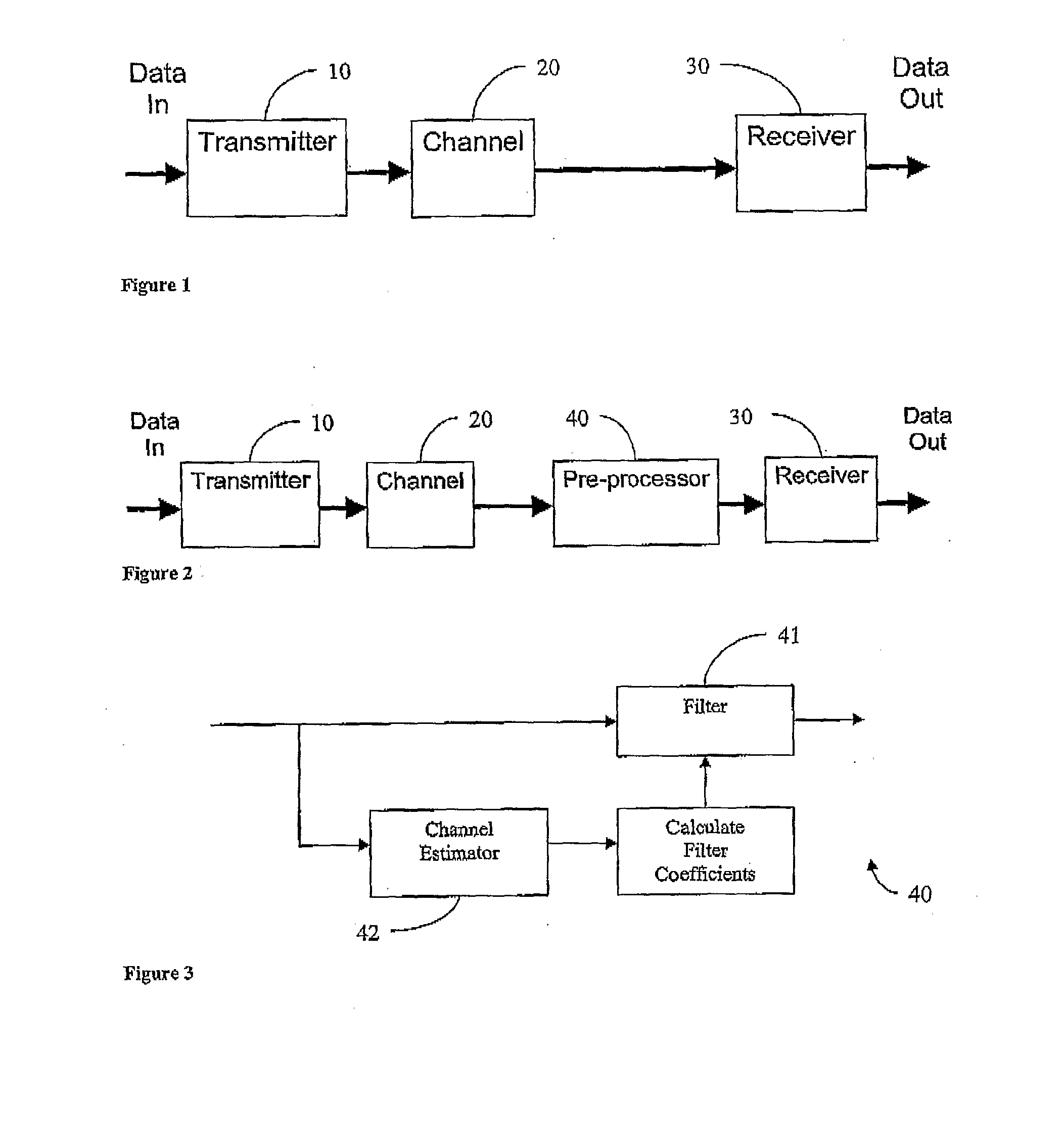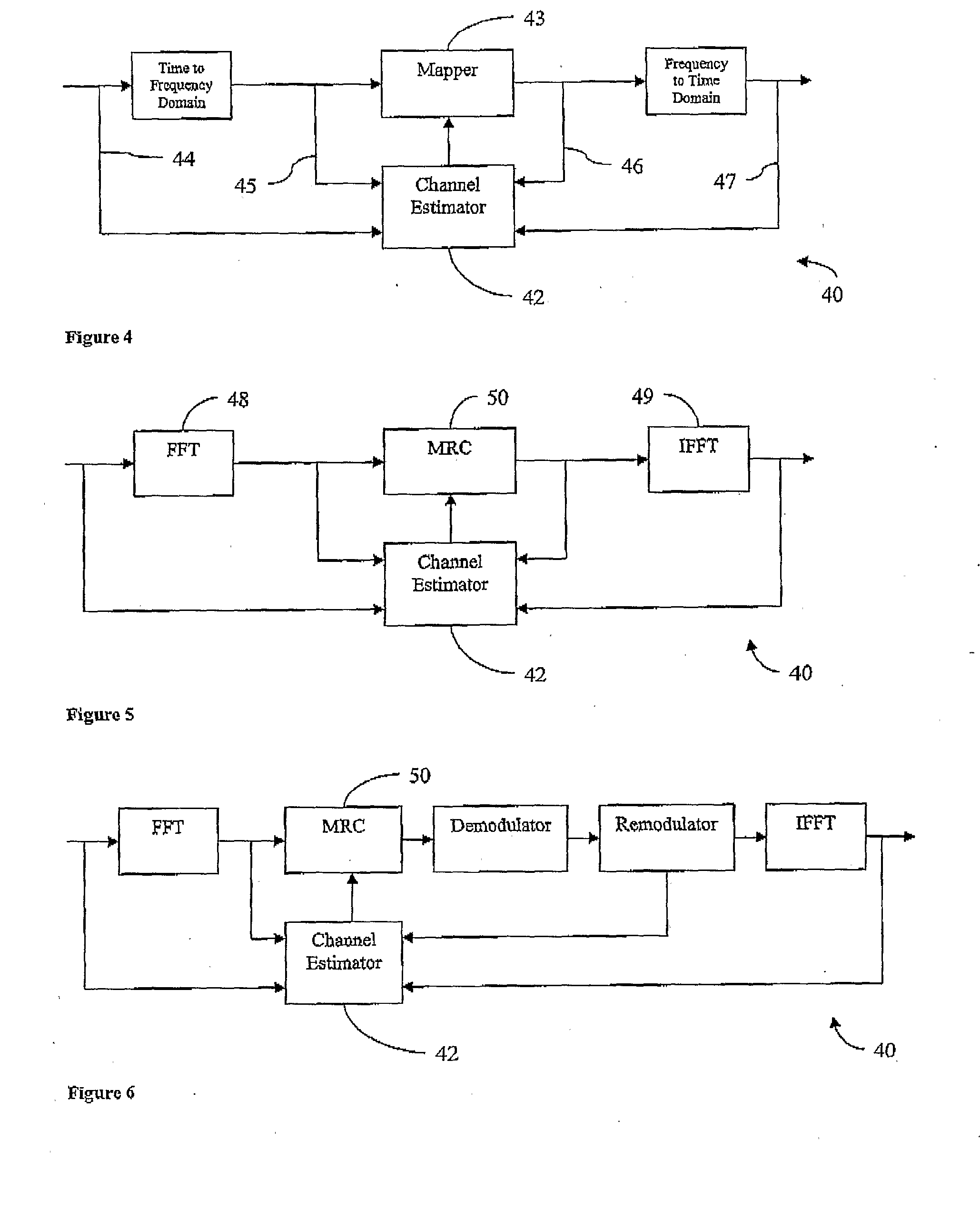Improving receiver performance in a communication network
a communication network and receiver technology, applied in the field of communication systems, can solve problems such as degrading performance, dvb waveforms may suffer inter-carrier interference, and channel estimates may not be perfect, and achieve the effect of improving the system error correction capability
- Summary
- Abstract
- Description
- Claims
- Application Information
AI Technical Summary
Benefits of technology
Problems solved by technology
Method used
Image
Examples
embodiment 80
[0137]FIG. 12 shows the preferred embodiment 80 of the IEEE 802.11a Pre-Processor. This embodiment uses algorithms derived from those defined in USA patent application publication US2004 / 0264561 “Filter structure for iterative signal processing” published on 30 Dec. 2004, Australian provisional patent application 2005904528 filed 22 Aug. 2005 and related PCT application PCT / AU2006 / 001201, PCT application PCT / A02007 / 000231 “Method and system for communication in a wireless network” filed 27 Feb. 2007 and PCT / AU2007 / 000722 “Method and apparatus for multicarrier communications” filed 24 May 2007, the contents of which are incorporated herein by cross-reference.
[0138]Pre-processor 80 takes the baseband signals from two RF ASICs (eg 63, 64) and performs automatic gain control (AGC), DC offset removal, and filtering in block 81. The filtered signal is output to the acquisition block 82, which identifies the beginning of the valid transmitted frame. If the frame is valid, it is converted f...
embodiment 90
[0149]FIG. 17 shows an alternate embodiment 90 of an IEEE 802.11a Pre-Processor that has low latency. In this embodiment 90 the outputs 91 of maximum ratio combiner 83 are passed directly (or via a buffer) to the IFFT block 85, thereby reducing processing delay.
embodiment 100
[0150]FIG. 18 shows an alternate embodiment 100 of an IEEE 802.11a Pre-Processor that has low latency. In this embodiment the effects of the channel are reduced or eliminated using a time domain filter 102. The coefficients of the time-domain filter 102 are generated by filter coefficient generator 104, which receives an output from the channel estimator 42. The output of the time domain, filter 102 is passed to the output of the pre-processor 100.
PUM
 Login to View More
Login to View More Abstract
Description
Claims
Application Information
 Login to View More
Login to View More - R&D
- Intellectual Property
- Life Sciences
- Materials
- Tech Scout
- Unparalleled Data Quality
- Higher Quality Content
- 60% Fewer Hallucinations
Browse by: Latest US Patents, China's latest patents, Technical Efficacy Thesaurus, Application Domain, Technology Topic, Popular Technical Reports.
© 2025 PatSnap. All rights reserved.Legal|Privacy policy|Modern Slavery Act Transparency Statement|Sitemap|About US| Contact US: help@patsnap.com



